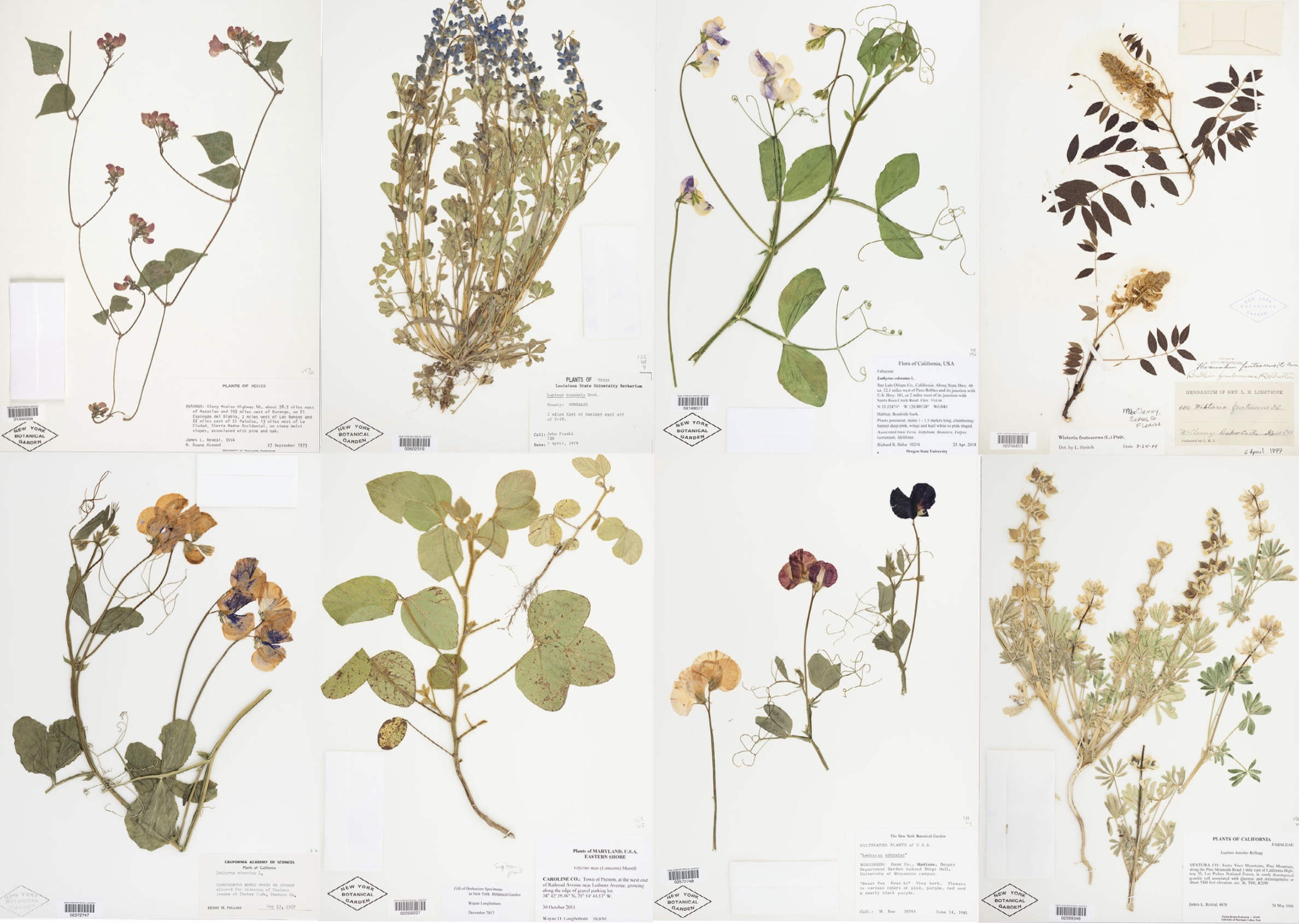Plants of the past, research of the future
The herbarium at the New York Botanical Garden is a resource for scientists looking for new ways to study plants
Casey Crownhart • November 16, 2021

Dried and pressed plants in herbaria serve as a historical record — they can also be a vital resource for researchers. [Images Courtesy of The C. V. Starr Virtual Herbarium]
Barbara Thiers slowly folds open a tiny paper envelope to reveal a green-brown clump of what looks like dried grass, barely half an inch long. It’s an unassuming piece of vegetation, and only one of nearly 8 million specimens housed in the New York Botanical Garden’s herbarium. It just happened to be collected by Charles Darwin.
Thiers is the director of the herbarium, and I joined her there on a spring morning, where she showed me preserved plants from all over the world and explained the painstaking lengths the staff goes to in order to keep these plants safe. The Darwin sample is special to her, both because of the celebrity factor and because Thiers spent the first part of her career studying similar plants: bryophytes, or mosses and their relatives.
But the herbarium isn’t just about preserving history. Each year, dozens of scientists use herbarium samples from the New York Botanical Garden and other collections around the world for their research. Pam and Doug Soltis are among those — they hope that herbarium samples might provide clues in their research about how plants partner with bacteria to get the nutrients they need.
Join us as Scienceline learns more about the herbarium at the New York Botanical Garden and how it’s enabling the next generation of plant research.
Music: “Bloom” and “Curves” by Jahzzar
Herbarium Sample Images Courtesy of The C. V. Starr Virtual Herbarium
Additional footage courtesy of University of Florida
Barbara Thiers: A herbarium is a collection of dried plant specimens. They have plants from the past six centuries that document what plants grew where.
There’s about 8 million, probably 7.95 million (laughs), as best we can tell. The goal of a herbarium isn’t really to have just one of each kind, like you might if you were stamp-collecting, or maybe even a library. No, the goal is to have many representatives.
Anyone with a legitimate excuse to study our specimens can. And what they’re mostly doing is studying them to see if they’re correctly named, to see where they grow, and maybe to do some DNA sampling of them as well.
Doug Soltis: So the value of using herbarium collections, you can access and take samples from numerous species, you know, all in a short timeframe, because they’re all there, in one place.
Pam Soltis: The sampling from a herbarium specimen can really be pretty simple. For example, the herbarium at the New York Botanical Garden. We usually only need as much leaf tissue as, like, the size of your thumbnail in order to get enough DNA to do this sort of study.
Barbara Theirs: If you want DNA out of something bad enough, you can probably find a way to get it. Now, we’re actually doing much more sophisticated work at the genomic level, where they’re actually looking at individual genes. And that’s what the Soltises are doing, they’re looking at the genes for the origin of nitrogen fixation.
[music]
Pam Soltis: Really for decades, plant geneticists have been interested in trying to engineer this nitrogen-fixing, symbiotic capability into plants that don’t currently have that. And if that were the case, you could imagine that crop plants that are not able to do this, wouldn’t need fertilizer.
Doug Soltis: So what we’ve done with the massive increase in DNA sequencing capability is take a look at about 15,000 of those species in this group of plants, the nitrogen-fixing group. And so for the first time, we’re getting a really good picture of where this trait appears, where it’s lost. So now we can take a look at those same genes on a really massive scale, across this entire group of plants, and those will really allow us to, you know, kind of tease apart the underlying genetic machinery that makes this happen.
I think studies like this show the value of these enormous herbarium collections. And collections in general become more valuable with time. Because there’s so many cool things that we can do today that we couldn’t do 20, 40, 50 years ago. And I think that trend will continue. We’ll be doing things with collections 50 years from now that we probably can’t imagine now.
Barbara Thiers: We’re actively adding. It’s important that we keep collecting, because if we want to continue to document how vegetation has changed over time, which is going to have a huge impact on humanity, because we depend on plants for everything, then we have to keep collecting them through this period of change, so that people in the future will be able to see the evidence of how change happened, through the plants.